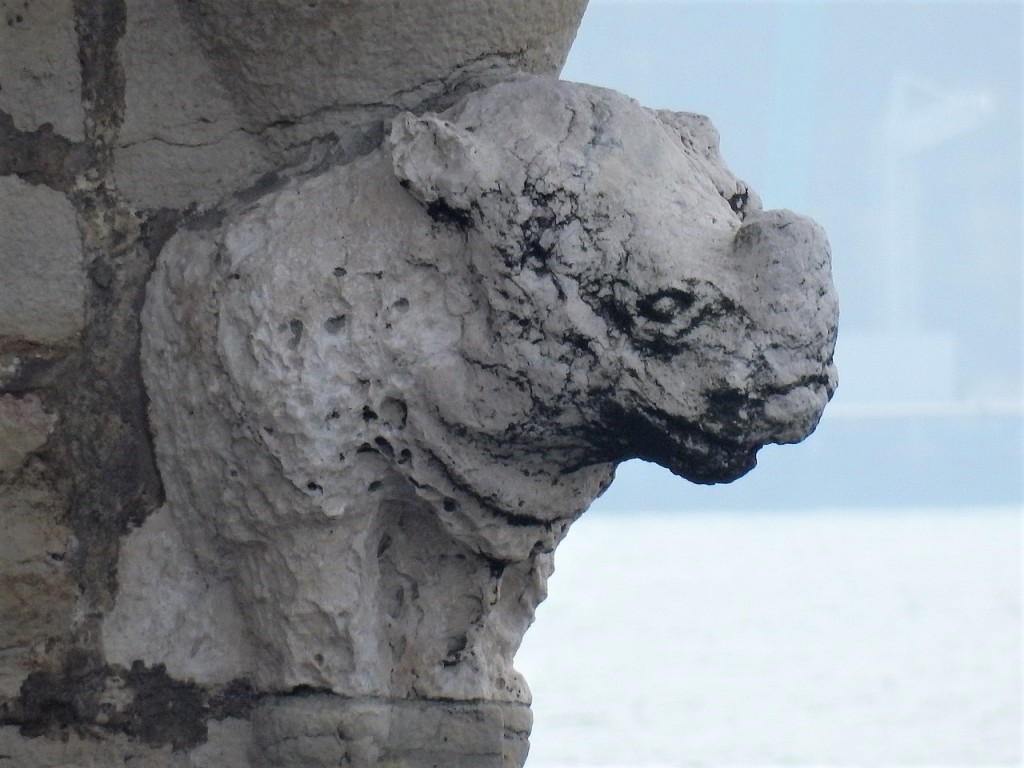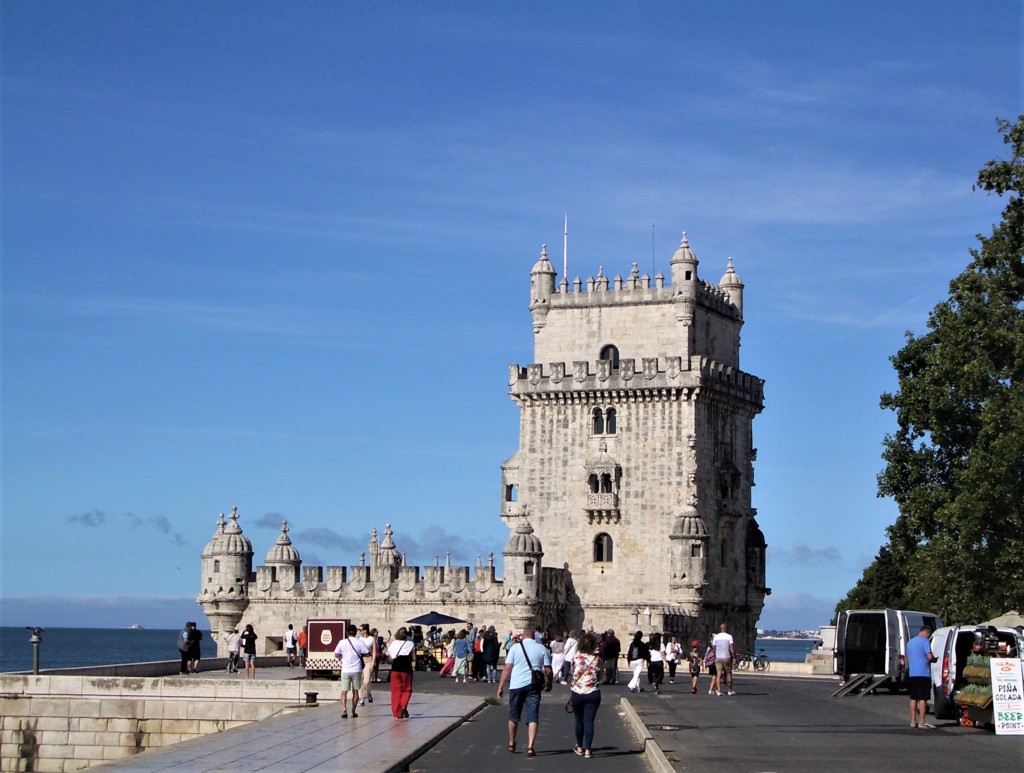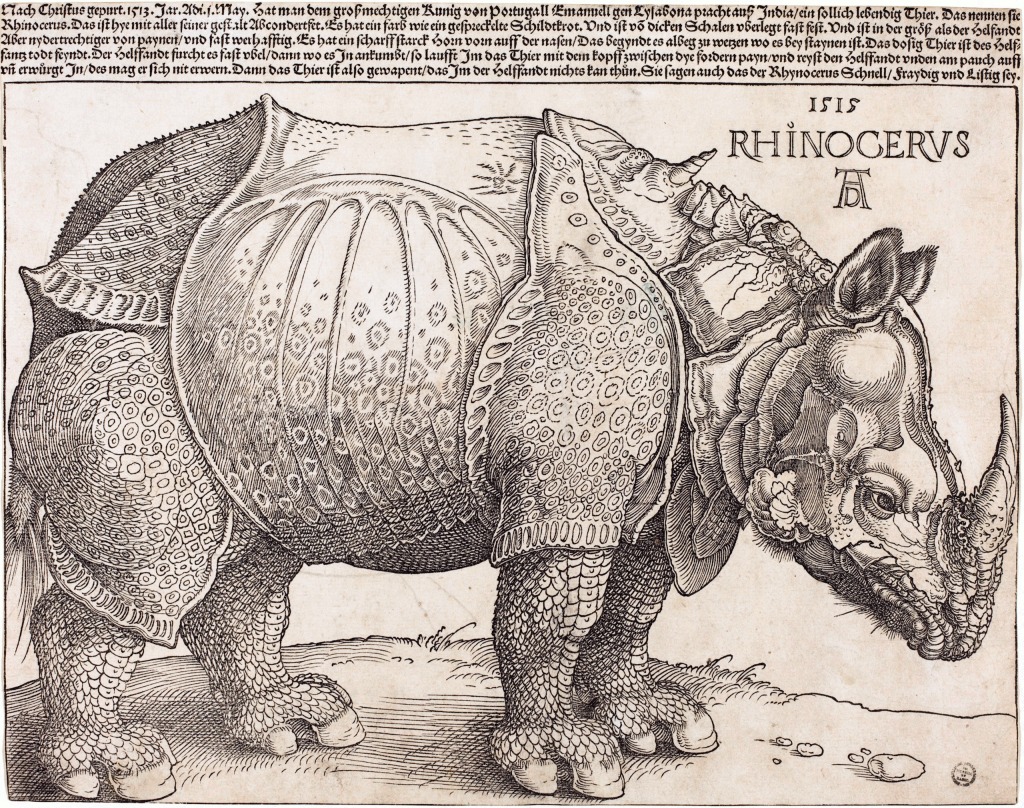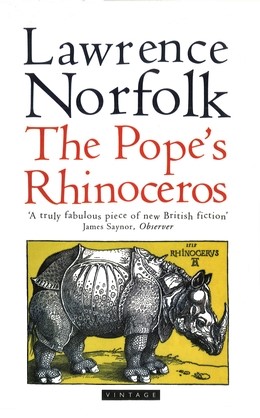
Grove Koger
When Maggie and I visited Lisbon’s famous Belém Tower in 2023, we didn’t take in very many details. The fault was mine, as I have a short attention span and I’m always anxious to move on to whatever we’re doing next. However, there’s one detail in particular I regret missing—the badly weathered sculpture of the head of a rhinoceros adorning the base of one of the tower’s turrets, which you see above in a photograph by RimerMoshe at Wikimedia Commons.
There’s quite a story behind that rhinoceros, one that involves history, art, and literature, not to mention natural history. It’s a story that’s been told before, but one that bears repeating.

First of all, there really was a rhinoceros, a male Rhinoceros unicornis, or Indian rhinoceros, and his name in the Gujarati language was Ganda, although at some point he was renamed Ulysses. He’s noted as the first of his species to be seen in modern Europe, although I should mention that Roman Emperor Marcus Julius Philippus (c. 204–249 CE) is known to have introduced one into a notably cruel gladiatorial event in the Colosseum in Rome.
Ulysses was originally presented as a gift from the sultan of Camby (now the Indian state of Gujarat) to the governor of Portuguese India, Afonso de Albuquerque. The governor in turn sent the animal and its keeper to King Manuel I, and after a long voyage around Africa, the two came ashore near the Belém Tower on May 20, 1515. Subsequently, Manual decided to send it on, again, as a gift to curry favor, to Pope Leo X. However, the ship carrying the rhinoceros foundered off the coast of Italy in 1516, and the poor beast, which was shackled to the deck, drowned. But—and this is where the art comes in—several artists created images of what was, after all, a very strange animal. One of these was Albrecht Dűrer, who, surprisingly enough, never actually saw Ulysses, but based his woodcut on a sketch and a written description.

Dűrer’s woodcut isn’t particularly accurate, but it’s undoubtedly a rhinoceros, and a powerful image to boot. I’m reproducing one impression of it above, courtesy of the National Gallery of Art in Washington, D.C.
In our own day, British writer Lawrence Norfolk based his inventive 1996 novel The Pope’s Rhinoceros on the saga, mixing in a number of other elements as well.
When all’s said and done, however, we may want to put art and literature aside to mourn poor, lost Ulysses, who gave his life to satisfy the whimsical desires of a few powerful men.

If you’d like to subscribe to World Enough, enter your email address below:
And if you’ve enjoyed today’s post, please share!
Grove,
I enjoy reading all of your posts, but this one touched me more. I think it’s because of your ending.
Barb
LikeLike
I know what you mean about the ending. I generally avoid downbeat subjects, but with this one, there was no good way to avoid it. I just kept thinking poor, poor animal.
LikeLike